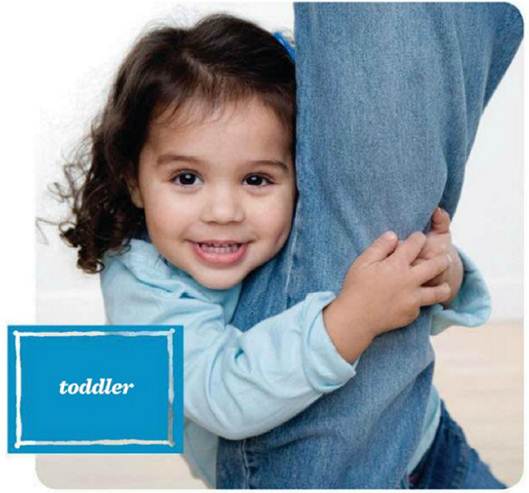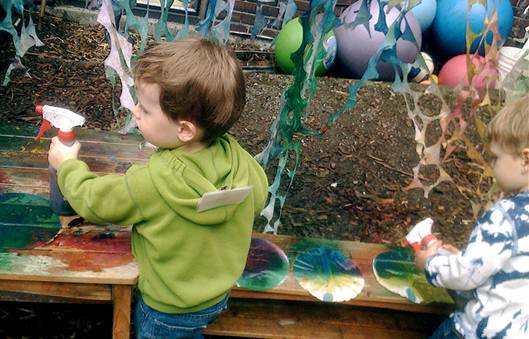It’s normal for young kids to experience
separation anxiety, but you can make it comfortable for them.
Eileen Wolter never used to have trouble
leaving her son with a nanny while she went to Pilates class. But when he was
about 18 months old, things changed. “Graeme would scream and cry when the
nanny help him, and once I’d gone, he’d camp out near the front door,” says the
New Jersey, US, mom. What made him start reacting so dramatically? It’s simple:
He started thinking like a toddler, says psychotherapist Dr. Fran Walfish,
author of The Self – Aware Parent. “As childen start walking, they begin to
assert their independence and move away from their parents. But they’re not
ready to fully separate,” she explains.

Around 16 to 20 months, toddlers are
working to develop more mastery over their body (think running), and every new
challenge that they face can cause stress, Dr. Walfish notes. As a result, they
feel conflicted about being away from the security of their parents. While this
phase may take months or even years to pass, there’s plenty you can do to ease
separation anxiety in different situations.

Around
16 to 20 months, toddlers are working to develop more mastery over their body
The trigger: Saying goodbye
Whether you’re dropping your child off at
day care or leaving her at home with Dadi, farewells can be tough. By now your
toddler understands object permanence – the idea that something continues to
exist when it can’t be seen or heard (even Mom). However, she still needs
reassurance that when you leave, you’ll always come back. You can help give her
this sense by playing simple games; start with peekaboo, and then try the
bye-bye game, says Elizabeth Pantley, author of The No-Cry Separation Anxiety
Solution. To play the latter, say “bye-bye” to your child, hide behind a chair,
then pop out. “This involves more separation than peekaboo,” she explains.
Finally move on to hide-and-seek.
When the time comes for you to leave your
kid for real, given her advance warning that the nanny will be there, or that
you’ll be dropping her off, and then keep your goodbye brief. “If you act
anxious, or keep returning for another hug, she will think there is something
to worry about,” says Dr.Vincent Barone, a child psychologist at Chirldren’s
Mercy Hospitals and Clinics, in Missouri, US. (Avoid sneaking out, which can
cause her to worry that you might disappear without warning – and result in
more clinginess.)
It can help to develop a very brief ritual
for the process. You might say, “Mommy will be back to get you after work. I
love you.” Then hug your child quickly or give her a butterfly kiss or a high
five – and leave. By keeping farewells the same each time, you create a
familiar transition from being with you to being without you. Another smart
move: Ask your nanny or day care teacher to have an activity ready as soon as
you turn your child over. Getting her engaged in a clapping game, or a new toy
will take her mind off the fact that you’re leaving, Pantley notes.
The trigger: Handling a big group

Going to a large gathering can be
anxiety-provoking for your toddler, who may be afraid of losing you in a crowd.
When you arrive someplace with a lot of unfamiliar faces, avoid pushing him to
interact – wait until he takes an interest in others. If he does let someone
else entertain him, don’t wander off. “He might accept being held by someone,
but only minutes later decide that it’s too much,” says Pantley. Be ready to
scoop him up if he gets upset. And, don’t stress if you end up having to stay
by your toddler’s side the the whole time. “You’re not crippling him – you’re
offering support, which will help him feel comfortable in future social
settings,” Dr. Walfish assures.
The trigger: Going to sleep
Leaving your toddler in her room at night
can inspire anxiety, since these are probably the longest stretches of alone
time she regularly experiences. Be sure to establish a relaxing order of events
before sleep, such as a bath, then a story or songs. This will help ease her
into the notion that bedtime is coming. Also, give your child a stuffed toy to
hold. This will make the quiet in her room less obvious in your absence, says
Pantley.
If she wakes up from a nap and is happily
playing in her crib, don’t rush in to get her crib, don’t rush in to get her.
“Let your child have the chance to experience what it feels like to be by
herself and having a good time,” says Pantley. Finding that she’s comfortable
will help her feel secure on her own eventually.